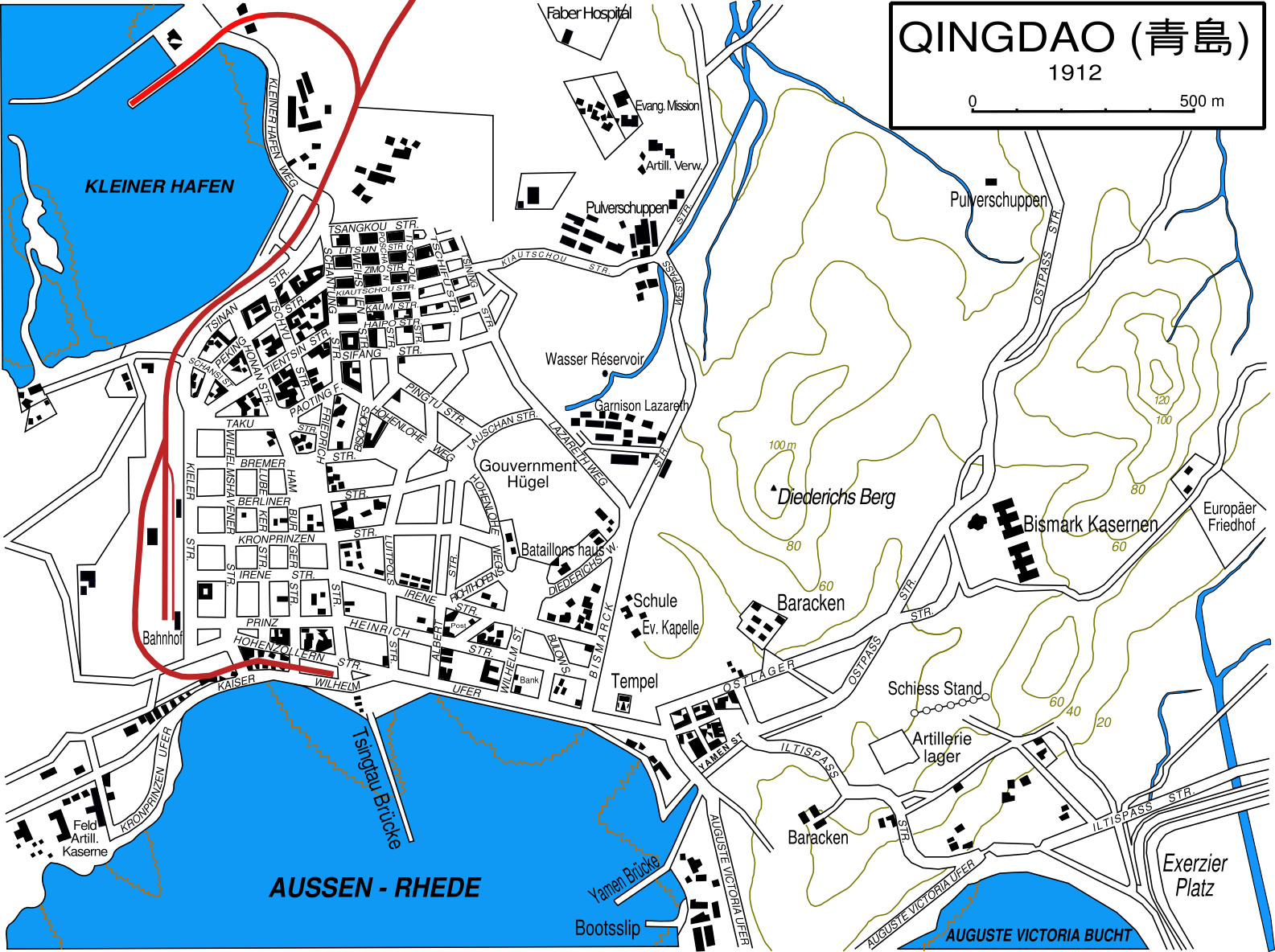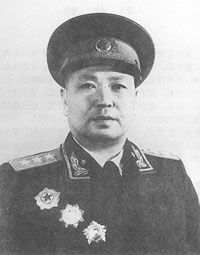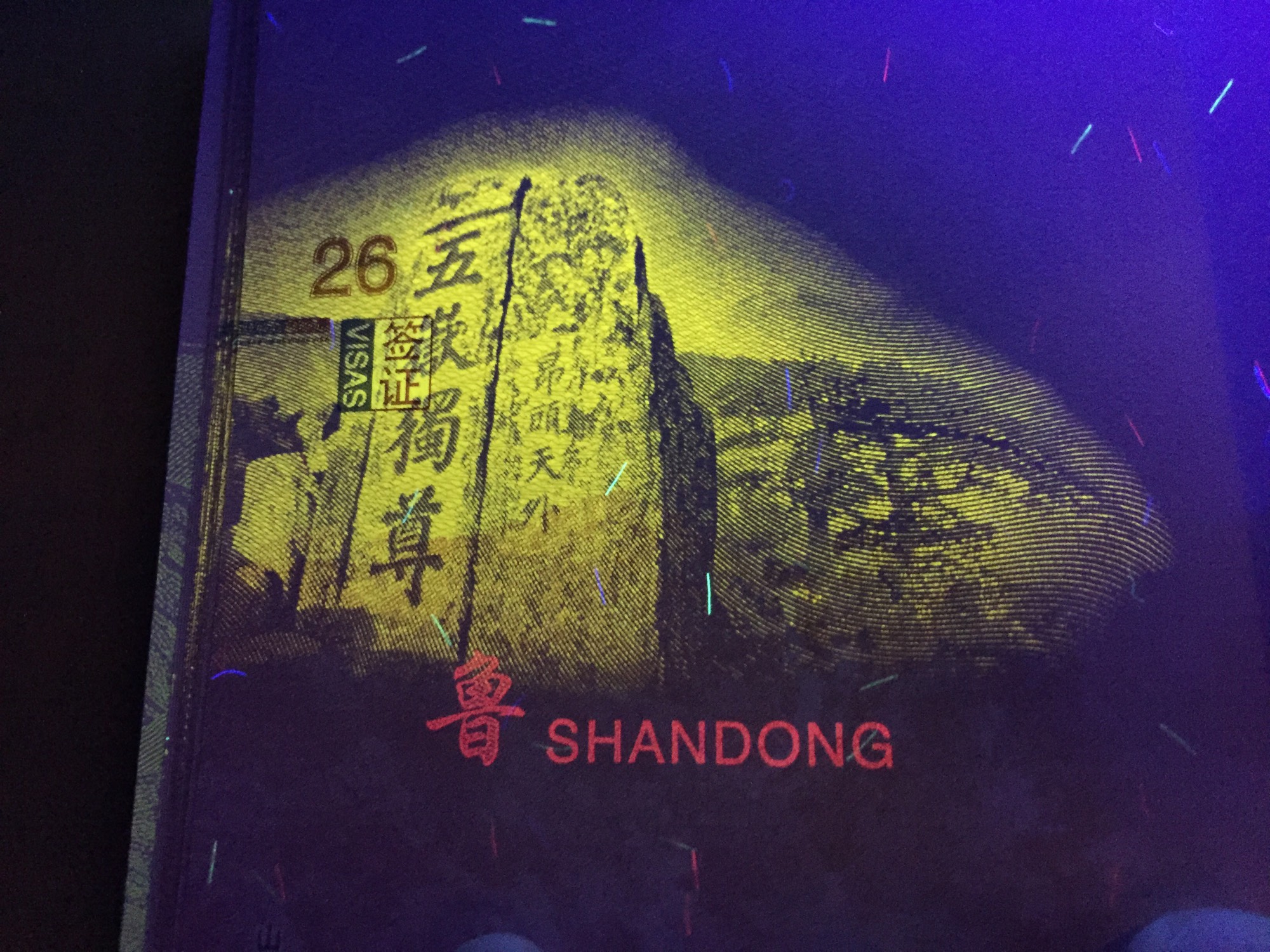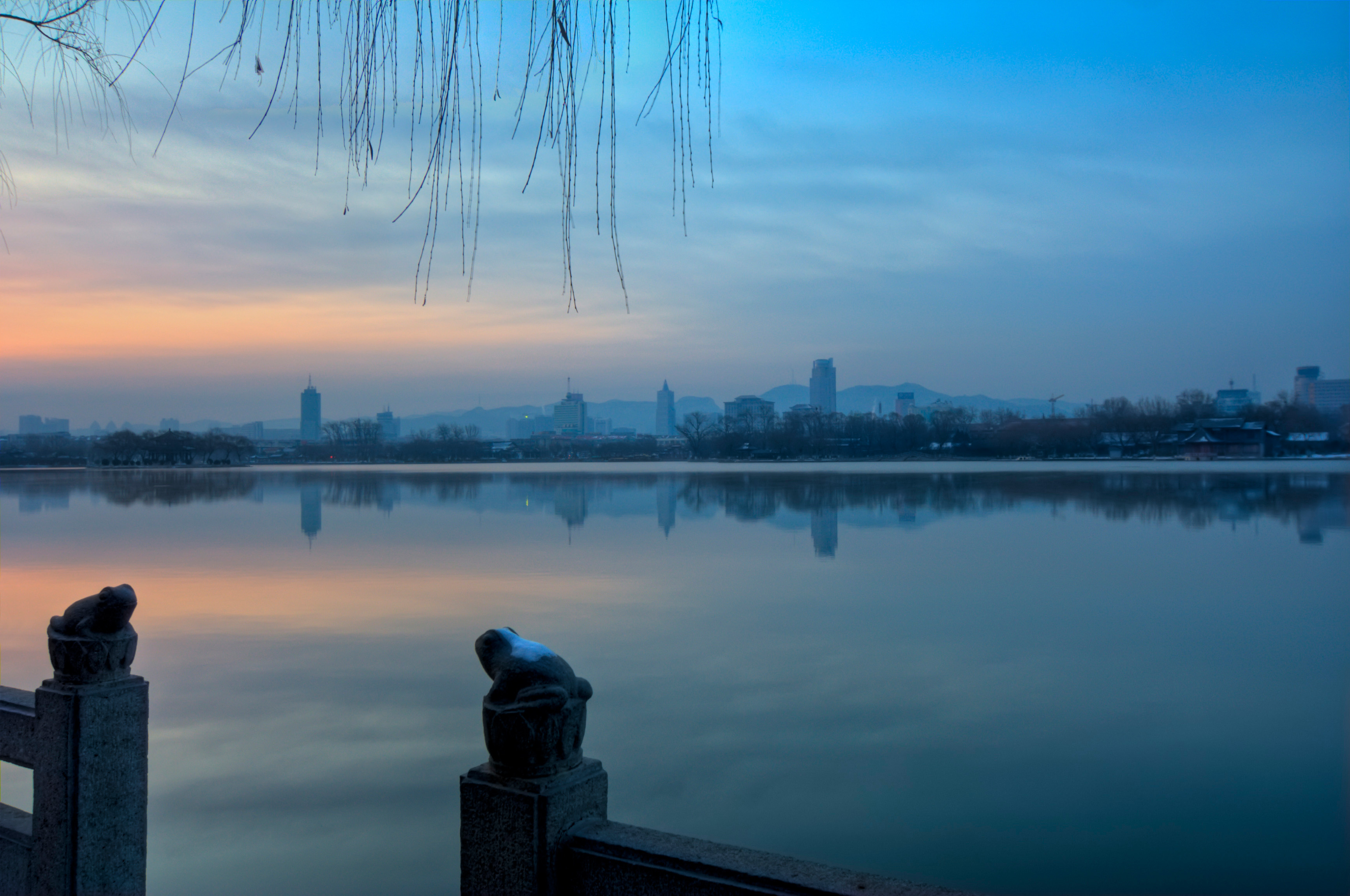|
Shandong
Shandong is a coastal Provinces of China, province in East China. Shandong has played a major role in Chinese history since the beginning of Chinese civilization along the lower reaches of the Yellow River. It has served as a pivotal cultural and religious center for Taoism, Chinese Buddhism and Confucianism. Shandong's Mount Tai is the most revered mountain of Taoism and a site with one of the longest histories of continuous religious worship in the world. The Buddhist temples in the mountains south of the provincial capital of Jinan were once among the foremost Buddhist sites in China. The city of Qufu was the birthplace of Confucius, and later became the center of Confucianism. Shandong's location at the intersection of ancient and modern north–south and east–west trading routes has helped establish it as an economic center. After a period of political instability and economic hardship beginning in the late 19th century, Shandong has experienced rapid growth in recent de ... [...More Info...] [...Related Items...] OR: [Wikipedia] [Google] [Baidu] |
Jinan
Jinan is the capital of the province of Shandong in East China. With a population of 9.2 million, it is one of the largest cities in Shandong in terms of population. The area of present-day Jinan has played an important role in the history of the region from the earliest beginnings of civilization and has evolved into a major national administrative, economic, and transportation hub. The city has held Sub-provincial city, sub-provincial administrative status since 1994. Jinan is often called the "City of Springs" for its famous 72 Artesian aquifer, artesian springs. Jinan is one of the top 35 cities in the world for scientific research as tracked by the Nature Index according to the Nature Index 2023 Science Cities. The city is home to List of universities and colleges in Shandong, several major universities, including Shandong University, Shandong, Shandong Normal University, Shandong Normal, Shandong Jianzhu University, Shandong Jianzhu, University of Jinan, Qilu University o ... [...More Info...] [...Related Items...] OR: [Wikipedia] [Google] [Baidu] |
Qingdao
Qingdao, Mandarin: , (Qingdao Mandarin: t͡ɕʰiŋ˧˩ tɒ˥) is a prefecture-level city in the eastern Shandong Province of China. Located on China's Yellow Sea coast, Qingdao was long an important fortress. In 1897, the city was ceded to Germany. For the Germans Qingdao (Tsingtau) was a strategic trade center, port and base for its East Asia Squadron, allowing the German navy to project dominance in the Pacific. In 1914, following the outbreak of World War I, Japan occupied the city and the surrounding province during the Siege of Tsingtao. In 1915, China agreed to recognize Japan's special position in the territory through what became known as the Twenty-One Demands. In 1918, the Chinese government, under the control of the warlord Duan Qirui, secretly agreed to Japanese terms in exchange for a loan. Following the First World War, during the Paris Peace Conference, Japan secured agreements with the Allied powers to recognize its claim to the areas in Shandong, which in ... [...More Info...] [...Related Items...] OR: [Wikipedia] [Google] [Baidu] |
Governor Of Shandong
The governor of Shandong, officially the Governor of the Shandong Provincial People's Government, is the head of the Shandong Provincial People's Government. The governor generally serves as the deputy secretary of the Shandong Provincial Committee of the Chinese Communist Party, and is the second-highest ranking official in the province after the Party Secretary of Shandong, secretary of the CCP Shandong Committee. List of governors People's Republic of China References [...More Info...] [...Related Items...] OR: [Wikipedia] [Google] [Baidu] |
Party Secretary Of Shandong
The secretary of the Shandong Provincial Committee of the Chinese Communist Party is the leader of the Shandong Provincial Committee of the Chinese Communist Party (CCP). As the CCP is the sole ruling party of the People's Republic of China (PRC), the secretary is the highest ranking post in Shandong. The secretary is officially appointed by the CCP Central Committee based on the recommendation of the CCP Organization Department, which is then approved by the Politburo and its Standing Committee. The secretary can be also appointed by a plenary meeting of the Shandong Provincial Committee, but the candidate must be the same as the one approved by the central government. The secretary leads the Standing Committee of the Shandong Provincial Committee, and is usually a member of the CCP Central Committee. The secretary leads the work of the Provincial Committee and its Standing Committee. The secretary is outranks the governor, who is generally the deputy secretary Deputy or deput ... [...More Info...] [...Related Items...] OR: [Wikipedia] [Google] [Baidu] |
Yellow River Delta
The Yellow River, also known as Huanghe, is the second-longest river in China and the sixth-longest river system on Earth, with an estimated length of and a watershed of . Beginning in the Bayan Har Mountains, the river flows generally eastwards before entering the long Ordos Loop, which runs northeast at Gansu through the Ordos Plateau and turns east in Inner Mongolia. The river then turns sharply southwards to form the border between Shanxi and Shaanxi, turns eastwards at its confluence with the Wei River, and flows across the North China Plain before emptying into the Bohai Sea. The river is named for the yellow color of its water, which comes from the large amount of sediment discharged into the water as the river flows through the Loess Plateau. The Yellow River basin was the birthplace of ancient Chinese civilization. According to traditional Chinese historiography, the Xia dynasty originated on its banks around 2100 BC; Sima Qian's ''Shiji'' () record that ... [...More Info...] [...Related Items...] OR: [Wikipedia] [Google] [Baidu] |
Weishan Lake
Nansi Lake (), or Weishan Lake, administrated by Weishan County, Shandong, Weishan County and located in Shandong Province in China, is the largest freshwater lake in the north of the country. It consists of four connected lakes: Weishan (), Zhaoyang (), Nanyang (), Dushan (). It is 120 km long and 1266 square km in area. History Early records: Zhaoyang Lake alone The first of the four lakes to appear in contemporary sources is Zhaoyang Lake, which Zou Yilin identifies with the Yuan-era Shanyang Lake (山阳湖) or Diaoyang Lake (刁阳湖). It was one of four major reservoirs dredged by the early Ming, and it was described as being 80 ''li (unit), li'' long, and lying between Teng County (now Tengzhou county-level city) in the north and Pei County in the south. It was apparently located on the east side of the canal, and on higher ground than the canal itself, making it ideal as a natural reservoir. Sluices were built at the lake mouths in 1410 and rebuilt in 1494. In ... [...More Info...] [...Related Items...] OR: [Wikipedia] [Google] [Baidu] |
Mount Tai
Mount Tai () is a mountain of historical and cultural significance located north of the city of Tai'an. It is the highest point in Shandong province, China. The tallest peak is the ''Jade Emperor Peak'' (), which is commonly reported as being tall. Mount Tai is known as the eastern mountain of the Sacred Mountains of China. It is associated with sunrise, birth, and renewal, and is often regarded the foremost of the five. Mount Tai has been a place of worship for at least 3,000 years and served as one of the most important ceremonial centers of China during large portions of this period. Because of its sacred importance and dramatic landscape, it was made a UNESCO World Heritage Site in 1987. It meets 7 of the 10 evaluation standards for World Heritage sites, and is listed as a World Heritage site that meets the most of the standards, along with the Tasmanian Wilderness World Heritage Area in Australia. An earthquake or thunderstorm occurred around Mount Tai in 1831 BC or 1652 ... [...More Info...] [...Related Items...] OR: [Wikipedia] [Google] [Baidu] |
泰山
Mount Tai () is a mountain of historical and cultural significance located north of the city of Tai'an. It is the highest point in Shandong province, China. The tallest peak is the ''Jade Emperor Peak'' (), which is commonly reported as being tall. Mount Tai is known as the eastern mountain of the Sacred Mountains of China. It is associated with sunrise, birth, and renewal, and is often regarded the foremost of the five. Mount Tai has been a place of worship for at least 3,000 years and served as one of the most important ceremonial centers of China during large portions of this period. Because of its sacred importance and dramatic landscape, it was made a UNESCO World Heritage Site in 1987. It meets 7 of the 10 evaluation standards for World Heritage sites, and is listed as a World Heritage site that meets the most of the standards, along with the Tasmanian Wilderness World Heritage Area in Australia. An earthquake or thunderstorm occurred around Mount Tai in 1831 BC or 1652 BC ... [...More Info...] [...Related Items...] OR: [Wikipedia] [Google] [Baidu] |
List Of Chinese Provincial-level Divisions By GDP Per Capita
The article is about China's first-level administrative divisions by their gross domestic product per capita in main years. All figures are given in the national currency, renminbi (CNY) and in USD at nominal values. Purchasing power parity index changes frequently, and its relevant data is not included in the main table, only included at the end of the entry. Purchasing power parity reference comes from the World Economic Outlook published by the International Monetary Fund (IMF). The average CNY exchange rate used here is from China NBS, and CNY PPP exchange rates are estimated according to the IMF. Unless otherwise specified, the GDP per capita here is based on the annual average population. The annual average population or mid-year population is the average of the resident population at the end of the two consecutive years. Since the implementation of reform and opening up in mainland China in 1978, its economy has developed rapidly. In 1995, the GDP per capita of Bei ... [...More Info...] [...Related Items...] OR: [Wikipedia] [Google] [Baidu] |
Lin Wu
Lin Wu (; born February 1962) is a Chinese politician and the current Chinese Communist Party Committee Secretary of Shandong province. Previously, he served as CCP Committee Secretary of Shanxi province, Shanxi Governor, deputy governor and the chief of the CCP Organization Department of Jilin province. Career Lin Wu was born in Minhou County, Fujian, and graduated from Jiangxi Institute of Metallurgy (now Jiangxi University of Science and Technology). He started to work at Xiangtan Steel in 1982, and served as the Assistant manager in 1997. In 1998, he served as the General Manager of Xiangtan Steel Group. In 2003, Lin Wu was appointed as the director of Hunan Economic and Trade Commission. Later he was appointed as the acting mayor of Loudi City in 2005, and promoted to the CCP Committee Secretary in 2008. In 2011, Lin was appointed as the deputy chief of the CCP Organization Department of Hunan province. He was transferred to Jilin province, and served as the chief of th ... [...More Info...] [...Related Items...] OR: [Wikipedia] [Google] [Baidu] |
Zhou Naixiang
Zhou Naixiang (; born December 1961) is a Chinese political figure and state-owned enterprise executive, who formerly served as the chairman of China State Construction Engineering. He is currently serving as the governor of Shandong. Biography Zhou was born in Yixing, Jiangsu. He graduated with a vocational degree from Nanjing University of Technology and later became a senior engineer. In 1982, after graduating, Zhou joined the Jiangsu Construction Engineering Company, where he was a construction worker, translator, then technician. He joined the Chinese Communist Party in December 1987. He went on to the company's branch in Shanghai, where he ascended through the management ranks. He also worked for the company as a member of the senior management team in the United States. In July 2003, he became vice mayor of Taizhou, Jiangsu, then joined the municipal Party Standing Committee in 2006. In 2008, he was named head of the Jiangsu department of tourism. In October 2010, he was ... [...More Info...] [...Related Items...] OR: [Wikipedia] [Google] [Baidu] |
Daming Lake
Daming Lake () is the largest lake in the city of Jinan, capital of Shandong, China and one of city's main natural and cultural landmarks and tourist attraction. Located to the north of the historical city center, the lake is fed by the artesian karst springs of the area and hence retains a fairly constant water level through the entire year. Islands Located in the lake are nine small islands: *Cuiliuping Island (), also known as () *Niaoqingqiqi Island () *Guting Island (), the location of the Lixia Pavilion *Mingshi Island () *Huiquan Island () *Huxin Island () *Jiaxuan Island () *Qiuliu Island () *Huju Island () Buildings The lake is surrounded by a park with an ensemble of historical buildings, some of which stand on the islands in the lake: Lixia Pavilion The Lixia Pavilion () is located on an island off the lake's east shore. The pavilion is said to mark the spot of a meeting between the Tang dynasty poet Du Fu and the calligrapher Li Yong (, 678–747). The pavilion was ... [...More Info...] [...Related Items...] OR: [Wikipedia] [Google] [Baidu] |









